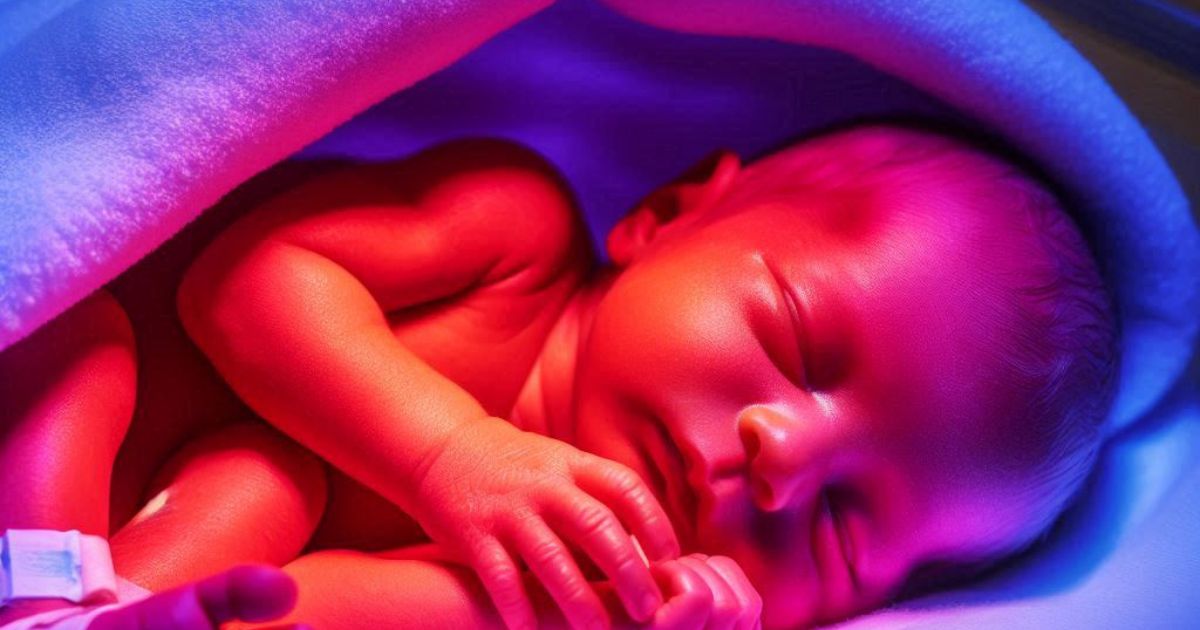Bilirubin and Newborn Jaundice – A Common Condition, Explained
Have you noticed a yellow tinge to your newborn’s skin or eyes? This could be a sign of jaundice, a condition caused by a buildup of bilirubin in the blood. While it might sound scary, newborn jaundice is actually very common and often harmless. Let’s delve into the world of bilirubin and understand why it sometimes causes this temporary yellowing in our precious little ones.
Bilirubin is a yellowish pigment produced naturally when your baby’s body breaks down old red blood cells. During pregnancy, the placenta acts as a filter, removing bilirubin from your baby’s blood. But after birth, this responsibility falls on your baby’s brand new liver, which is still under development. This can sometimes lead to a temporary imbalance, causing bilirubin levels to rise in the bloodstream, resulting in the yellowish discoloration of the skin and eyes – jaundice.
Bilirubin – Behind the Scenes of the Yellowing
Now that we know jaundice is linked to bilirubin, let’s take a closer look at this pigment itself. Imagine millions of tiny red blood cells constantly zipping around your baby’s body, carrying oxygen. These red blood cells have a limited lifespan, and when they get old and worn out, they’re broken down by the body. During this breakdown process, a yellowish substance called bilirubin is produced.
Why Newborns Get Jaundice – A Balancing Act
Before birth, your amazing placenta acted as a filter, removing bilirubin from your baby’s blood and passing it into your circulation for disposal. It was a well-oiled machine! But after birth, this responsibility shifts to your baby’s brand new liver. Here’s where things can get a little tricky.
A newborn’s liver is still under development, and its ability to process bilirubin efficiently might not be quite up to speed yet. This temporary immaturity of the liver function can lead to a buildup of bilirubin in the bloodstream, causing jaundice.
Signs and Symptoms of Jaundice – A Visual Guide
The most common and noticeable sign of jaundice is the yellowing of your baby’s skin and eyes. This yellowing typically appears first on the face, particularly around the nose and forehead. As bilirubin levels rise, the yellowing can progress downwards, reaching the chest, tummy, and eventually the arms and legs.
Here’s a helpful tip: Gently press your finger on your baby’s nose or forehead. If the skin appears yellow even after you remove your finger, it could be a sign of jaundice. In babies with darker skin tones, jaundice might be more subtle. In such cases, a yellow tinge in the whites of the eyes (sclera) can be a good indicator.
While the yellowing is the hallmark sign, in some cases of severe jaundice, there might be other symptoms to watch out for:
- Poor feeding – A jaundiced baby might become sleepy or lethargic, leading to decreased interest in feeding. This can further contribute to jaundice.
- Lethargy – Excessive sleepiness and difficulty waking up for feeds can be a sign of high bilirubin levels.
- High-pitched crying – In rare cases, very high bilirubin levels can affect the brain, causing high-pitched crying.
When to Worry About Jaundice – Monitoring and Seeking Help
While newborn jaundice is common and often resolves on its own, it’s important to be aware of when to seek medical attention. Here’s where monitoring your baby’s bilirubin levels becomes crucial.
Pediatricians routinely monitor bilirubin levels through simple blood tests. These tests help determine the severity of jaundice and guide treatment decisions, if necessary. It’s important to follow your pediatrician’s recommendations for bilirubin testing, especially in the first week after birth.
Conclusion – A Bright Outlook for Your Bundle of Joy
Newborn jaundice might sound scary, but remember, it’s a very common condition, and in most cases, it resolves on its own within a couple of weeks. By understanding bilirubin and the reasons behind jaundice, you can be a more informed parent and advocate for your little one’s health.
The key takeaway is parental awareness. Knowing the signs and symptoms of jaundice, and when to seek medical attention, will give you peace of mind and ensure your baby receives the proper care, if needed. With early intervention and proper monitoring, the vast majority of babies with jaundice experience a full and healthy recovery.
